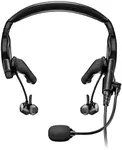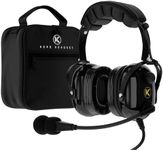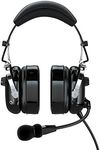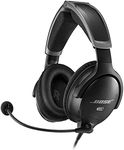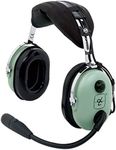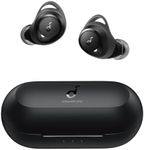Buying Guide for the Best Aviation Headsets
Choosing the right aviation headset is crucial for both comfort and safety during flight. A good headset not only protects your hearing from engine noise but also ensures clear communication with air traffic control and other crew members. When shopping for an aviation headset, it's important to consider how often you fly, the type of aircraft you use, and your personal comfort preferences. Understanding the key features will help you make a choice that fits your flying style and needs.Noise Reduction (Passive vs. Active)Noise reduction is about how well the headset blocks out unwanted sounds, especially engine and wind noise. There are two main types: passive noise reduction (PNR), which uses thick ear cups to physically block noise, and active noise reduction (ANR), which uses electronics to cancel out noise. PNR headsets are simpler and usually lighter, but ANR headsets provide much better noise cancellation, especially for low-frequency sounds. If you fly in very noisy aircraft or for long periods, ANR can make a big difference in comfort and hearing protection. For occasional or short flights, PNR may be enough.
Comfort and FitComfort and fit refer to how the headset feels on your head during use. This includes the weight, the padding on the ear cups and headband, and how adjustable the headset is. Heavier headsets or those with poor padding can cause discomfort or headaches during long flights. If you fly for extended periods, look for lightweight models with soft, well-padded ear cups and an adjustable headband. If you wear glasses, make sure the headset doesn't press too tightly against the frames.
Microphone Quality and PlacementThe microphone is what lets you communicate clearly with others. A good aviation headset will have a noise-canceling microphone that reduces background noise so your voice comes through clearly. The placement and flexibility of the microphone boom are also important; it should be easy to position close to your mouth and stay in place. If you often fly in noisy environments, prioritize a headset with a high-quality, noise-canceling microphone.
Connection Type (Plug Compatibility)Aviation headsets come with different types of plugs to match various aircraft. The most common are dual plugs (PJ), helicopter plugs (U174), and newer single-plug systems (like LEMO or XLR). It's important to know what type of connection your aircraft uses. If you fly different types of aircraft, you might want a headset with interchangeable cables or adapters. Always check compatibility before buying.
Durability and Build QualityDurability is about how well the headset stands up to regular use, including the quality of materials and construction. Aviation headsets are an investment, so you want one that can handle being packed, dropped, or exposed to sunlight and sweat. Look for sturdy materials, reinforced cables, and a solid warranty. If you fly frequently or in tough conditions, prioritize a headset known for its ruggedness.
WeightWeight affects how comfortable the headset is over long periods. Lighter headsets are generally more comfortable, especially for long flights, but sometimes heavier models offer more features or better noise reduction. If you fly for hours at a time, a lighter headset can help prevent fatigue. For shorter flights, weight may be less of a concern.
Additional Features (Bluetooth, Audio Inputs)Some headsets offer extra features like Bluetooth connectivity for phone calls or music, or auxiliary audio inputs for other devices. These can add convenience and enjoyment, especially on long flights. If you value being able to connect to your phone or listen to music, look for these features. If you prefer simplicity, you may not need them.
